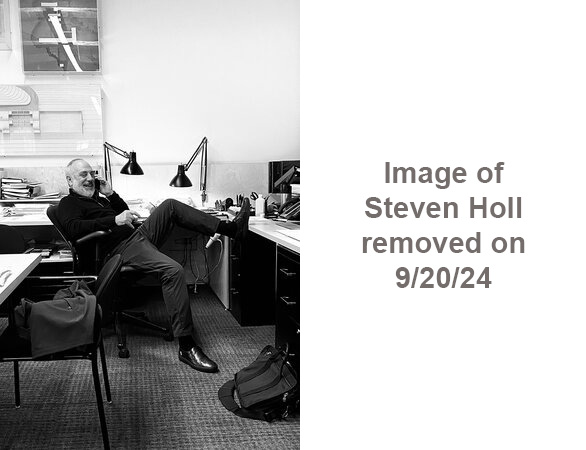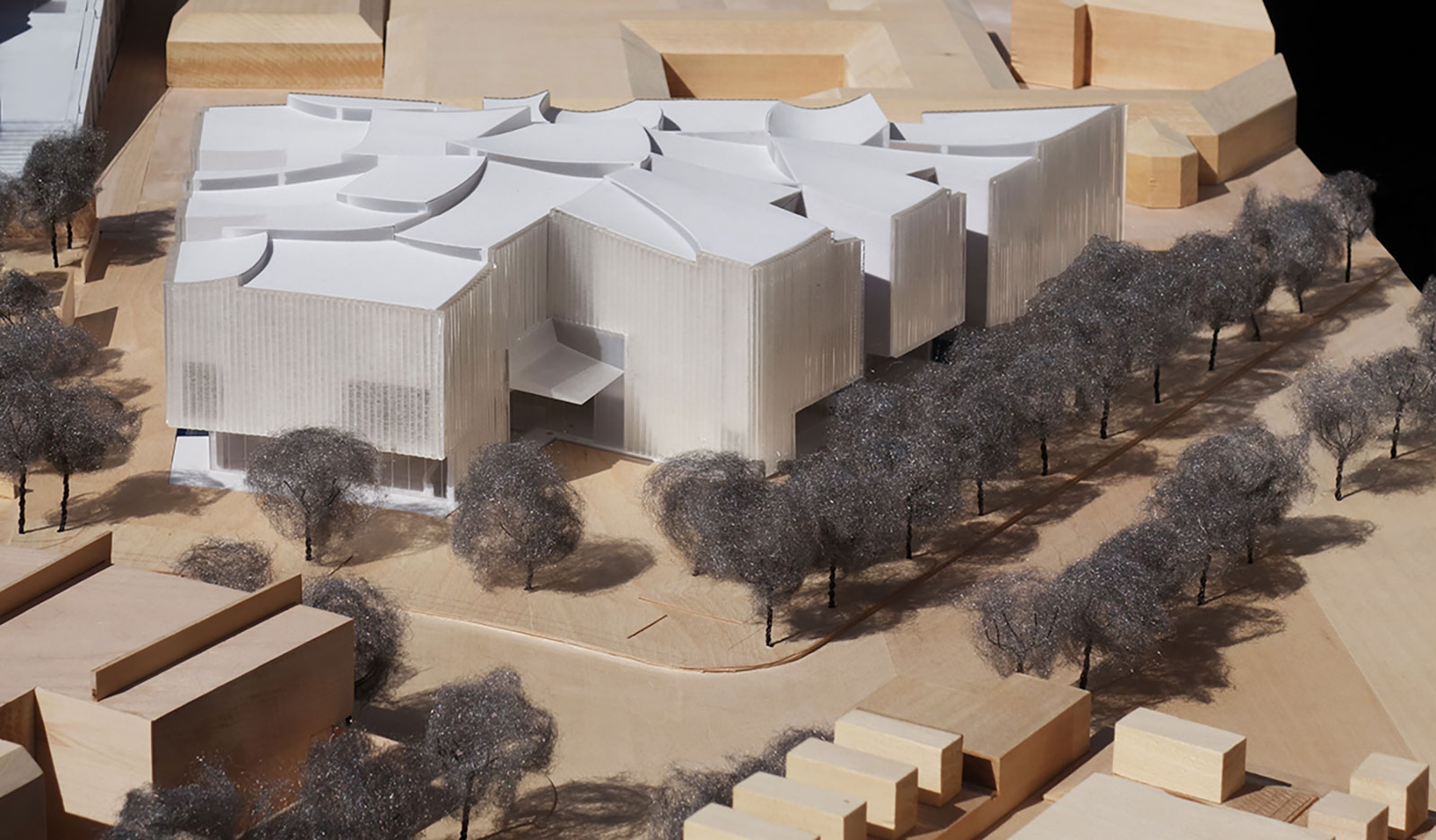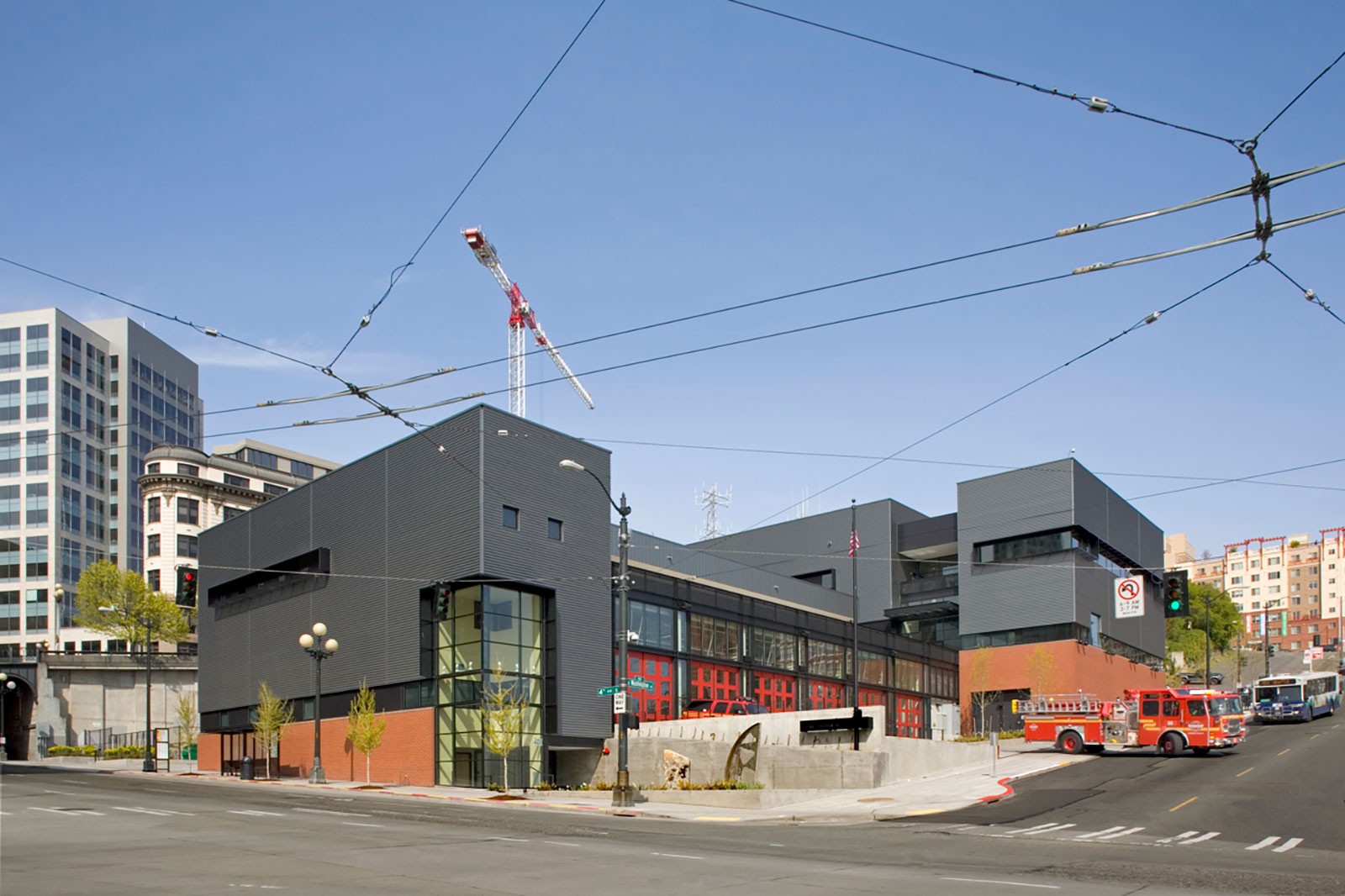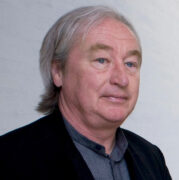
[Ed Weinstein photo courtesy of Weinstein A+U]
In the summer of 2017, BUILD sat down with Steven Holl and Ed Weinstein in Seattle’s Pike Place Market to discuss their humble beginnings, their common educational paths, and the life experiences that produced two distinctively successful architecture practices. Part 2 of the interview can be read here.
BUILD: You both come from gritty, working-class towns in Western Washington; Steven from Bremerton and Ed from Aberdeen. What about these industrial environments prepared you for your studies at the University of Washington and graduate school thereafter?
Steven Holl: There was no noteworthy architecture in Bremerton except for the Puget Sound Naval Shipyard. Growing up I didn’t have any relationship to architecture, and at the same time, I can’t even remember when I didn’t want to be an architect. I loved to draw and paint. My brother and I built tree houses, and we built little roads and little buildings in the earth. When I was 16, I built a car behind the garage.
Ed Weinstein: Aberdeen is a really soggy, wet timber town with a lot of fishing, a lot of logging, and very little culture. Like Steve, I had an interest in drawing, built a lot of models, and built a lot of forts. It was a very typical small town. The majority of my classmates went into the woods or into the mills after high school and followed the path of their parents. When I went to the University of Washington, it was intimidating because I wasn’t a very good student in high school. I found that the scale of the university was a little bit off-putting. There was an intimacy to the design studio, where we were able to work on our craft, and that was amazing. I think we felt very much at home in the studio; it was an extension of the kinds of things we enjoyed doing.
You were among the first students to participate in the UW’s well-known Rome program started by the late Astra Zarina. The experience must have taught you about so much more than just architecture.
SH: We’d never been to Europe before.
EW: I’d never been east of Idaho. I mean, the arrogance of the two of us: We had decided we were going to study all the piazzas in Italy and do a comparison of their metrics. We got a few books like Camillo Sitte’s City Planning According to Artistic Principles. We sent Astra a proposal of what we were going to do and she said, “You just have to get over here and sit down and shut up. Do you even speak Italian? Do you know anything about the cultural or economic history?”
SH: She found us an apartment at the Via de’ Nari , behind the Pantheon. I became obsessed with the Pantheon, going in there every day to see the light. The funny part about the apartment was that there were no windows. It was at the bottom of a light well.
EW: The most interesting aspect was the exposure to Astra, a very complex personality. She was the most passionate person that I had ever met—much larger than life. It was very revealing to come across someone who was so thoroughly passionate and who lived her life in the way that she did.
They tell stories of Astra giving cooking lessons on the roof of the dormitory. What are your memories from that?
SH: She said, “If you want to be an architect, the first thing you need to know is how to cook. It teaches you about color, flavor, and texture.” She would sit me down with a wooden bowl and crack the eggs—just egg whites. 40 minutes to make this kind of Italian mayonnaise. She taught me how to do spaghetti alla carbonara.
Even though you attended different graduate schools—Steven at the Architectural Association in London and Ed at Harvard’s Graduate School of Design (GSD)—these paths have much in common given your backgrounds. What similarities have you noticed in your graduate school experiences?
EW: Professor Herman Pundt, who had taught us in undergraduate school, told me that I needed to go to graduate school and leave Seattle to live in a different kind of city. He suggested Harvard’s Graduate School of Design in Cambridge, where he had received his PhD. I had been working with Lee Copeland, and he suggested the University of Pennsylvania. I applied to both programs and got about the same amount of scholarship funds for both. I went to Lee and he said, “If I had my options, I’d go to Cambridge because it’s a more pleasant place to live than Philadelphia.” It was on that level of information that I drove to Cambridge. It was a great experience, again because of a few key faculty members. A person who performed a role similar to Professor Pundt was Jerzy Soltan, who was Corbusier’s only employee after World War II. Soltan was absolutely inspiring. With the passion he exuded for architecture, urban design, and painting, he lived the life Corbusier had taught him to live.
SH: I was accepted at Penn, the GSD, Columbia, and Yale. I went to all these schools and didn’t like what I saw. Alvin Boyarsky saw my portfolio and said, “Come to the Architectural Association in London!” I got on a plane and went there. When I arrived, I showed Elia Zenghelis my portfolio, and he said, “This is great, why don’t you join our review?” They were studying the idea of giving a form an “architecton,” an abstract pictorial style invented by Kazimir Malevich, and asking students to come up with a site. There was a student who had put it over the Thames, like a bridge. She cut these arches with pink magic marker on either side of it. Rem Koolhaus and I both leaned over and said, “This is brilliant, but you have to redraw it.” That was the beginning of Zaha Hadid.
Upon graduating from the AA and the GSD, what were your professional intentions?
SH: I came back to San Francisco , and I entered a couple of competitions. I took an excursion-fare ticket to New York. My brother was the only person I knew in the city. I met Andrew MacNair, the Institute for American Studies was going on, it was very exciting, and it was really cheap to live there in 1977. I never took the return half of that ticket. While in New York I made this project called the Bronx Gymnasium Bridge. I did all these drawings and won a P/A Award. Because I won, I got a phone call from the dean of Syracuse, Werner Seligmann, who offered me a teaching job just based on this single drawing that was published in a magazine. I taught for 15 years before I had a practice.
EW: This is Steve’s adventurous self. My path is so much more conventional. I graduated in ’75 from the GSD, and I had a girlfriend who became my wife back here in Seattle. There was no work in ’75 in Boston. I went back to work for Joyce, Copeland, Vaughan, & Nordfors , with whom I had previously worked. I enjoyed the firm and had a great group of young colleagues, but the it disbanded in 1977. I had brought a house into the firm as a design project; I took it and went across the street to join my colleague Michael Canatsey to share space, and in three months we decided we’d start a partnership. I got licensed very quickly, as I wasn’t previously. Like all small firms, we were doing back porch remodels, small vacation cabins, and single-family houses. There was a time in Seattle when the city was malleable and you could establish a presence. That became my career path from 1977 to now, almost 40 years later.
You’ve both taken your share of risks in the architecture profession, and many of the victories are clear in your completed work. Can you tell us about a risk that didn’t pay off? A big lesson learned?
SH: I have designed 270 projects and only realized 55. So, the risk is five times more failures than successes. You lose a competition, or get fired, because you won’t change. I have a problem right now with my archive being so big. I have to move it; all these beautiful models over all of these years, and I don’t know what I’m going to do with them. There are millions of hours in these models. It’s almost like a burden. The great thing is when you get a building built, it’s there.
EW: Our practice is clearly different. The majority of our projects do get built, and the risks are almost solely financial. When we agree to do a municipal project under the Washington State fee schedule and it is a small project—a library, or a fire station—we know we’re going to dramatically subsidize it. We do it anyway because we think it is important. All the small municipal projects are like that. When you work with developers, you can occasionally get burned if they can’t secure financing or are overextended. You can get way out over your skis in terms of your willingness to subsidize these projects because you’re so eager to have them constructed. It can happen with institutions as well. They can be very well meaning and very ambitious but never secure their funding.
Steven, you’ve, become known for a certain disobedience to the conventional rules of architecture, which has won you commissions like the Museum of Fine Arts, Houston. Ed, you’ve become known for understanding the rules of architecture so well that you can redefine them, elevate the design, and give the client something they didn’t even know they wanted. How did these different, yet masterful, approaches to the rules of architecture develop in your careers?
SH: Being disobedient is not accepting the given as the correct way. That’s worked out for me in four competitions that I won. For the Museum of Fine Arts Houston, they were supposed to build a seven-story parking garage, and not only did we convince them not to build a parking garage, but to build a new school. I wouldn’t call it disobedience. I would call it applying extreme scrutiny to everything that’s given to you. I do start out looking at a way to change the game.

EW: My sense, and what I try to teach in the office to my colleagues, is that we need to be very analytical. We need to do our research. When we start seeing relationships, we mine them for substance. We try to create a concept that is authentic to those circumstances. Fire Station 10 is a good example of this, as the only solution was to design a nonstylistic building that grows from its circumstances. As much as possible, we push the envelope, but not to penetrate it, not to break it, but to know right where the limits are and how to push up against them. In bothering to understand what motivates our clients, we can demonstrate that there’s a better way to do things, not just by arguing that it makes a stronger building, but by saying, “Here’s what you need, this is what we need, and we can both satisfy ourselves if you trust us.” Building trust is something that’s common to both of us.


Steven Holl established Steven Holl Architects in New York City in 1977. He obtained a bachelor of architecture from the University of Washington in 1970 and completed his post graduate studies at the Architectural Association in London in 1976. Steven is considered one of America’s most important architects and has completed cultural, civic, academic, and residential projects both in the United States and internationally. Steven is a tenured Professor at Columbia University’s Graduate School of Architecture and Planning, has lectured and exhibited widely, and has published numerous texts.
 Ed Weinstein has practiced architecture in Seattle for 45 years and is the principal and founder of Weinstein A+U. He obtained a bachelor of architecture from the University of Washington in 1971 and a master of architecture from Harvard University in 1975. His award-winning projects include housing, institutional, public sector, and commercial work. Ed has been a graduate studio instructor, has mentored many generations of young architects, and has made significant contributions to Seattle’s architectural legacy.
Ed Weinstein has practiced architecture in Seattle for 45 years and is the principal and founder of Weinstein A+U. He obtained a bachelor of architecture from the University of Washington in 1971 and a master of architecture from Harvard University in 1975. His award-winning projects include housing, institutional, public sector, and commercial work. Ed has been a graduate studio instructor, has mentored many generations of young architects, and has made significant contributions to Seattle’s architectural legacy.





